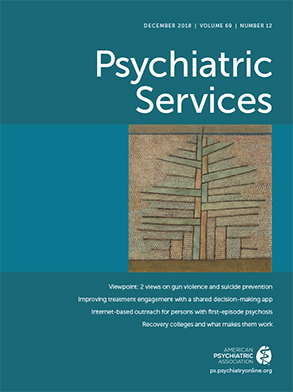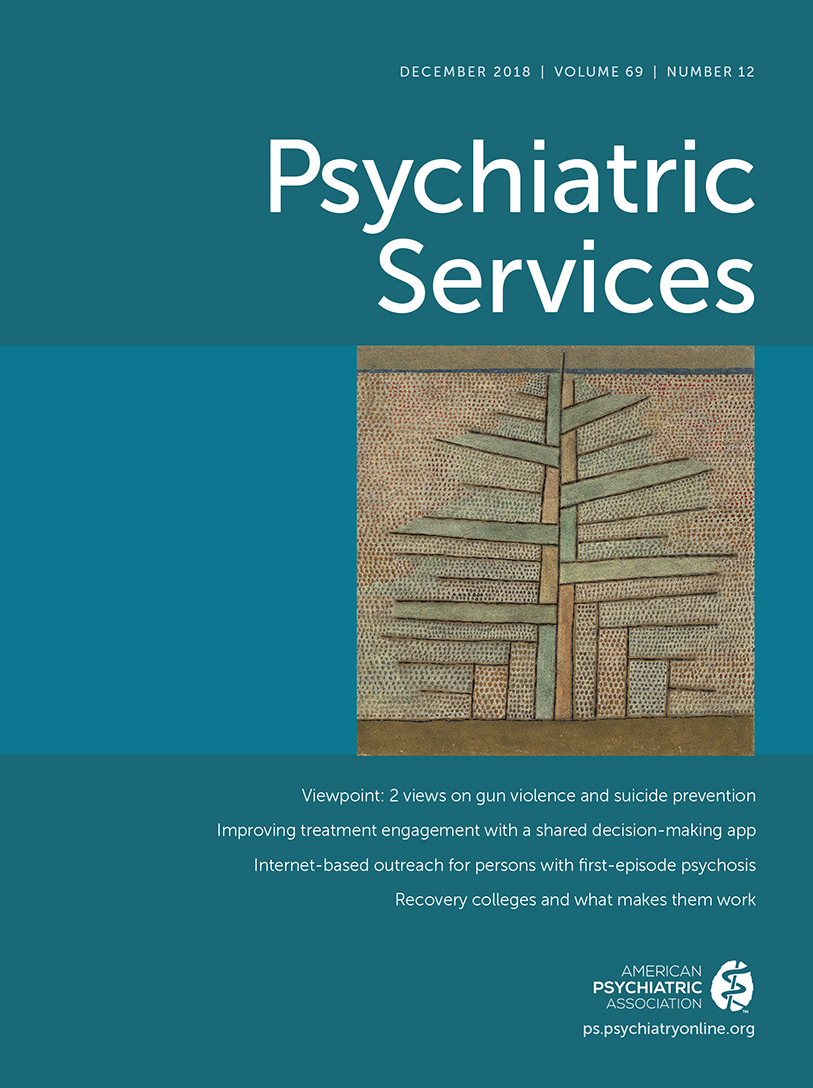Since 2000, more than 1.5 million people in the United States have been injured by a firearm, and a half-million have died. This total surpasses the combined U.S. military combat death toll of World Wars I and II. Of these gun deaths, 59% were suicides, and 37% were homicides (
1). Mass shootings accounted for less than one-tenth of 1% (
2). Still, the national conversation about gun violence tends to focus on senseless rampages by troubled young men while public officials pay lip service to an oversimplified, gun-ignoring solution: “fix mental health.” The mental-illness-and-mass-shooting narrative, as curated by the media, can perpetuate public misunderstanding and impede serious, broad-based efforts to both prevent gun deaths and improve mental health care.
How the “Crazed Mass Shooter” Story Thwarts Gun Violence Prevention and Mental Health Promotion
The mass shooter represents people’s worst nightmares—random, unpredictable gun violence and “insanity” in one package. A public mass shooting is an existential threat to everyday life that seems to demand a defensive response from the community. But the extraordinary sense of threat finds expression in an overgeneralized narrative, often scapegoating “the mentally ill” for the complex problem of gun violence.
When 26 people were shot to death in a Texas church in November 2017, President Trump opined, “I think that mental health is your problem here. . . . This isn’t a guns situation” (
3). National Rifle Association (NRA) spokeswoman Dana Loesch referred to the shooter as an “insane monster . . . crazy . . . nuts” and then argued for requiring states to report “mentally insane individuals” to the FBI’s National Instant Criminal Background Check System (
4). But most perpetrators of violent crimes do not have serious mental illnesses such as schizophrenia or bipolar disorder. And there are tens of millions of Americans with diverse psychiatric conditions who pose no threat to their neighbors but instead feel the sting of stigma.
A psychiatric diagnosis or history of psychiatric treatment do not, in themselves, legally disqualify people from purchasing or possessing firearms under federal law. Indeed, a federal appeals court recently ruled that even a record of involuntary commitment to a psychiatric hospital should not, under the Second Amendment, necessarily prohibit a person permanently from purchasing a gun—that is, without an opportunity for rights restoration after recovering from a past mental illness.
Mental health stakeholders are understandably concerned about preventing fearmongering and discrimination directed against people with psychiatric disabilities and about protecting civil rights. They also have a strong argument for reinvestment in and reform of an underperforming public behavioral health care system to remove barriers and improve access to services. But they are loath to be painted into a corner of defending disability rights in terms that are too easily distorted as “giving guns to the mentally ill” and justifying the need for better mental health services mainly as a way to stop public massacres. Advocates for people with mental illness would prefer a dialogue about rights, inclusion, and unmet needs in any other context—such as access to housing, employment, or parity in health insurance coverage—but are mired in a national conversation about gun rights and mental illness with mass shootings as the backstory.
Redirecting the Mental Health and Gun Violence Conversation
Perhaps mental health stakeholders should take the lead in bringing suicide to the fore as a crucial, underacknowledged dimension of firearm mortality. Although there is lingering social stigma and moral approbation associated with suicide, there is also a growing public understanding that most suicides (unlike most homicides) result from a serious mental illness for which the person bears no blame.
By the numbers, suicide is a public health problem that is twice the size of the homicide problem—13.4 versus 6.1 deaths per 100,000 people in 2016 (
1)—and the number of suicide decedents dwarfs the number of mass shooting victims. Preventing mass shootings altogether would have saved approximately 500 lives between 2000 and 2016 (
2); preventing gun suicides would have saved 319,000 during the same period (
1). As other causes of mortality have declined, the U.S. suicide rate has increased 33% since 2000 (
1); easy access to guns is an important reason.
The suicide crisis sits squarely at the intersection of inadequate (or poorly implemented) gun laws and a failing mental health care system. Mental illness is most often the reason that people try to end their own lives—and access to a firearm is most often the reason they do not survive. Of course, there is much to be done to reduce the multiple determinants of suicidal behavior. But even if nothing were done except to shift suicide attempts by gun to more survivable means, the U.S. suicide mortality rate would fall dramatically. Some research has found that when denied access to a firearm, only about 1 out of 5 would-be gun suicide attempters later died from suicide by substituting another lethal method (
5).
Advocates for gun violence prevention and mental health stakeholders should jointly push for suicide prevention as a critical component of reducing firearm deaths. They could emphasize the dual importance of improving access to treatment and limiting access to lethal means. The enactment of risk-based, time-limited gun removal laws is a good example of an intervention that contributes to both. Extreme risk protection orders are designed to respect rights, can prevent suicide, and provide an occasion for people in crisis to get help (
6).
Twelve states now have laws that use a civil court process to give police officers clear legal authority to search for and remove firearms from persons who pose a significant risk of harming themselves or others. The most common use of such a law is to separate guns from someone in a suicidal crisis. But the law also provides a practical course of action to prevent acts of gun violence toward others, for example, when there is concern about a person who is behaving in an angry, threatening manner and amassing firearms.
Mental health and gun violence prevention advocates should jointly push back against those who argue vaguely that “fixing mental health” could somehow eliminate gun violence without seriously addressing the problem of risky people having unfettered access to firearms. But these stakeholders should also call out the “stigma busters” if they naively assert that mental illness and firearm mortality are totally unrelated problems, and therefore that a discussion of sensible gun laws is irrelevant to mental health issues; it is relevant—and suicide is the main reason.
We have known for decades that people with serious mental illnesses carry a risk of suicide many times greater than that of people who do not have these illnesses. We have also known that guns are an extremely lethal means of intentional self-injury; nearly 90% of suicide attempts involving firearms result in death, compared with less than 10% of suicide attempts using most other methods. Better identification and more effective treatment delivered to people with severe mood disorders, alcohol problems, and other psychiatric maladies would surely prevent many from trying to hurt themselves. And keeping guns out of the hands of suicidal individuals could prevent many more from dying. We should use the levers of public policy to do much more on both fronts.

